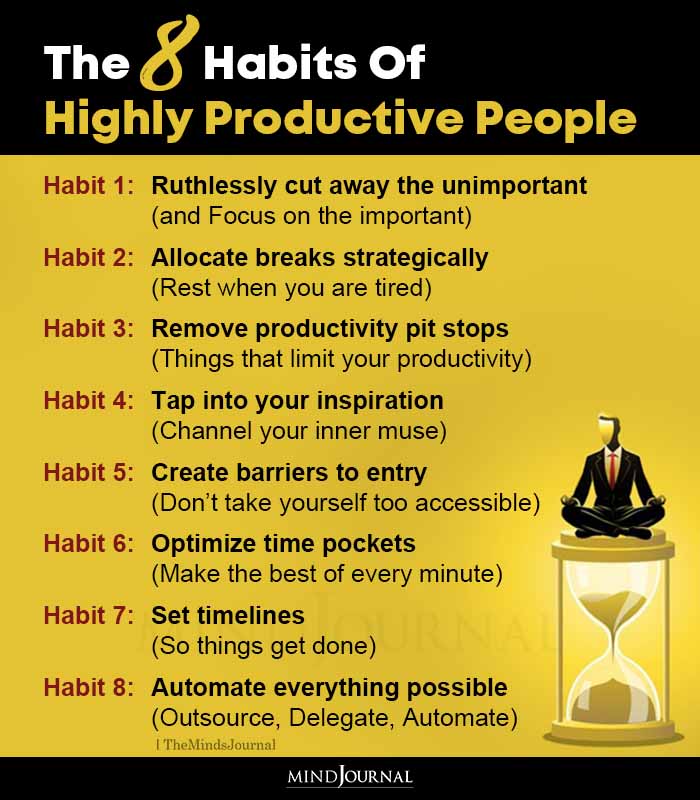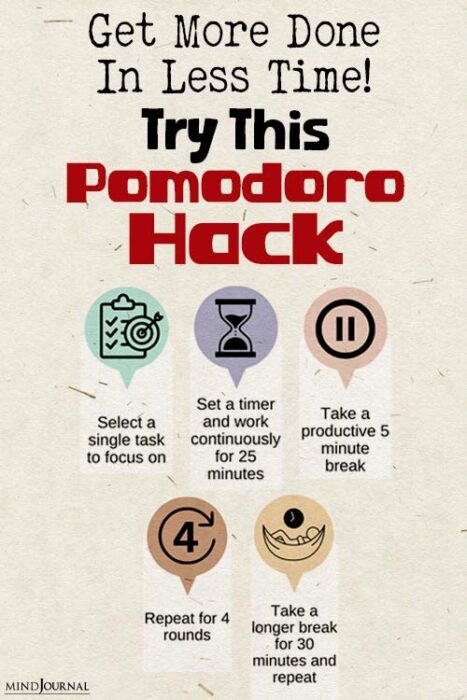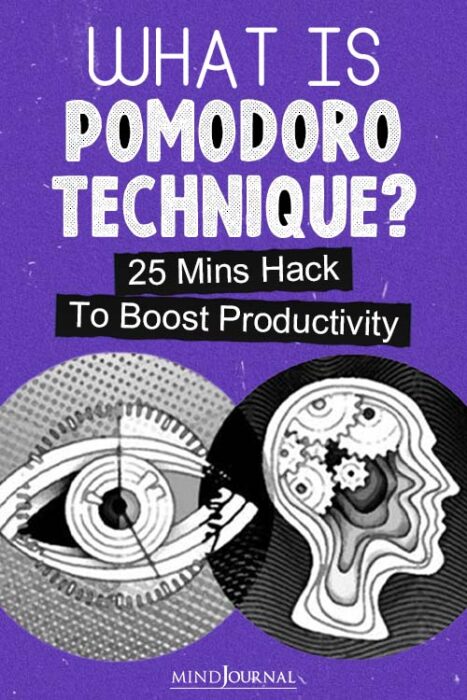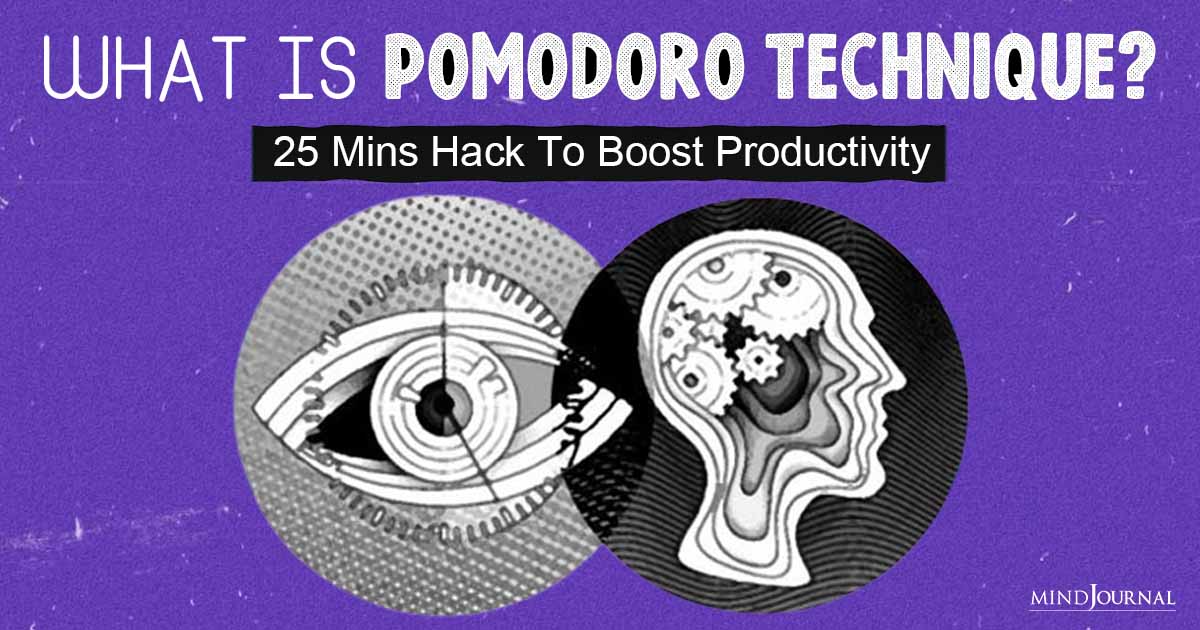Have you ever heard of the Pomodoro Technique? If you’re someone who constantly checks their phone, drifts off into daydreams, or gets lost on the Internet when you’re supposed to be working or studying, then you’ve come to right place. But what is the Pomodoro Technique?
It’s a simple method that can help you stay focused, boost your productivity, and even make work or study sessions more enjoyable.
Developed by Francesco Cirillo in the late 1980s, this time management method has gained popularity due to its simplicity and proven results. In this article, we will explore what is Pomodoro Technique, how to practice it, benefits of the Pomodoro Technique, drawbacks, and why it is an effective tool for improving productivity.
Now, let’s find out what is Pomodoro Technique.
Related: How To Improve Attention Span: 25+ Practical Tips For Boosting Your Attention
What Is Pomodoro Technique?
The Pomodoro Technique is a time management method that breaks work into intervals, usually 25 minutes long, called “Pomodoros.” Each Pomodoro is followed by a short break, typically 5 minutes, and after completing a set of Pomodoros, a longer break, around 15-30 minutes, is taken.
The name “Pomodoro” (Italian for tomato) was inspired by the tomato-shaped kitchen timer used by Cirillo during his university days.
Now that we know what is Pomodoro Technique, let’s know more about what is Pomodoro Study Technique and how it works.
What Is Pomodoro Study Technique?
- Set clear goals: Before starting a Pomodoro, clearly define the task or goal you want to accomplish. Breaking larger tasks into smaller, manageable chunks helps maintain focus and motivation.
- Set a timer: Use a Pomodoro app or timer to set a 25-minute timer. During this time, work exclusively on the task at hand, avoiding all distractions.
- Work intensely: Concentrate on the task without any interruptions during the Pomodoro. If any distractions arise, note them down and address them during the break.
- Take short breaks: After completing a Pomodoro, take a 5-minute break to relax and recharge. Engage in a quick physical activity or simply close your eyes and clear your mind.
- Long breaks: After completing a set of four Pomodoros, take a longer break of 15-30 minutes. Use this time to recharge, stretch, or engage in a different activity.
Now that we have talked about what is Pomodoro Study Technique, let’s explore the benefits of the Pomodoro Technique.
Benefits Of The Pomodoro Technique
1. Your focus gradually improves.
One of the major benefits of the Pomodoro Technique is this.
It is effective because it capitalizes on the brain’s ability to sustain focus for shorter durations. By working in concentrated bursts of 25 minutes, you can train your brain to stay engaged on a specific task without succumbing to distractions. This focused work promotes productivity by minimizing the temptation to switch tasks or get side-tracked.
The time constraint of each Pomodoro creates a sense of urgency, motivating you to make the most of your limited time. Over time, this practice strengthens your brain’s ability to concentrate, leading to improved productivity, task completion, and a reduced tendency to become easily distracted.

2. You experience enhanced productivity.
The Pomodoro Technique boosts productivity by breaking tasks into smaller, more achievable intervals. When faced with a large or overwhelming task, it’s easy to feel demotivated or unsure where to start.
However, by dividing the task into manageable Pomodoros, you experience a sense of accomplishment with each completed interval. This sense of progress and achievement fuels motivation and builds momentum as one Pomodoro leads to the next.
The continuous cycle of completing Pomodoros throughout the day creates a positive feedback loop, driving productivity and encouraging you to stay focused and engaged in your work. Ultimately, this incremental approach leads to increased productivity and a greater sense of accomplishment by the end of the day.
3. You slowly find yourself getting better in time management.
What is Pomodoro study technique?
By dividing work into timed intervals, it creates a structured framework that helps you effectively manage your time. The technique encourages you to allocate specific periods, such as 25 minutes, for focused work on a particular task.
This time-boxing approach promotes task prioritization, as you must decide which tasks to tackle within each Pomodoro. By consciously allocating time for breaks, the technique also prevents burnout and helps you maintain your energy and concentration levels.
Overall, the Pomodoro Technique enables you to make conscious decisions about how you spend your time, ensuring that important tasks are given the attention they deserve and time is used efficiently.
Related: Unleashing Efficiency: Discover The 25 Best Productivity Apps 2023
4. You find it easier to deal with procrastination.
One of the most useful benefits of the Pomodoro Technique is this obviously.
By setting a finite timeframe for each Pomodoro, it creates a sense of urgency and encourages you to start working immediately. This time constraint serves as a powerful motivator, as the ticking clock pushes you to overcome the inertia of procrastination and take action.
Once the Pomodoro begins, the momentum builds, and you are more likely to stay focused and engaged with the task at hand. The structured nature of the technique also helps you avoid distractions and stay on track, further reducing the temptation to procrastinate.
Overall, the Pomodoro Technique effectively mitigates procrastination by instilling a sense of urgency and promoting immediate action.
Drawbacks Of The Pomodoro Technique
1. You might find the time-frame a bit too rigid.
While the Pomodoro Technique offers structure and focus, its rigidity may not suit everyone’s work style or task requirements. You might find the fixed 25-minute intervals too confining, as certain tasks may need more or less time for completion.
Strictly adhering to the Pomodoro intervals could potentially disrupt the flow of work and hinder productivity in such cases. It is important to recognize that flexibility is key, and you should adapt the technique to suit your needs.
You can modify the duration of Pomodoros based on task complexity or personal preferences, allowing for a more tailored approach that maximizes productivity without feeling restricted by set time intervals.
2. You might find the practice of switching tasks at the end of each Pomodoro exhausting.
While this intentional task switching can provide variety and prevent mental fatigue, it may disrupt the flow of certain tasks that require prolonged focus. For complex or creative endeavors, such as writing, programming, or problem-solving, getting into a state of deep concentration can take time.
Constantly switching tasks at the end of each Pomodoro may disrupt your flow and hinder productivity. To mitigate this, you can consider extending the duration of Pomodoros for tasks that require sustained focus or completing multiple Pomodoros in succession for a specific task before switching.
Adapting the technique to accommodate different work requirements can help strike a balance between focus and variety.

Why Is The Pomodoro Technique Effective?
- Time-bound focus: Creating a set period for work promotes urgency, which can prevent the mind from wandering and reduces the chances of external interruptions. By setting specific intervals for tasks, distractions are minimized and concentration is enhanced.
- Incremental progress: Achieving small victories frequently can keep motivation high and provide a sense of forward momentum. Celebrating each completed task, however small, reinforces positivity and drive.
- Increased self-awareness: By consistently observing how one spends their time, it becomes easier to identify strengths and areas for improvement in managing tasks. Recognizing work patterns helps in refining approaches for greater efficiency and effectiveness.
- Time awareness: Utilizing tools like timers or alarms can provide a clearer perspective on how long tasks truly take. Developing a realistic sense of task duration enables better planning and reduces time-related stress.
- Overcoming overwhelm: Breaking tasks into smaller chunks helps in avoiding feelings of being overwhelmed by the enormity of a project. Dividing large tasks makes them more digestible and approachable, reducing anxiety and inertia.
- Increased efficiency: By dedicating full attention to one task at a time, productivity and the quality of work can significantly increase. With dedicated focus periods, there’s less time spent transitioning between tasks or regaining lost momentum.
- Improved work-life balance: Regular breaks ensure that work doesn’t consume all of one’s energy, allowing for rest, relaxation, and personal pursuits. By balancing intense work periods with breaks, overall well-being and job satisfaction are heightened.
- Task prioritization: Allocating specific periods to tasks forces a reflection on what is truly important and needs immediate attention. Deciding what to tackle first provides clarity and ensures that essential tasks are not overlooked.
- Reduced procrastination: Structured time allocation can serve as a countermeasure to the urge to delay or avoid tasks. Committing to short, defined work bursts makes starting less daunting and curbs the temptation to postpone.
- Enhanced time blocking: Integrating the Pomodoro technique with time blocking can optimize the way tasks are scheduled throughout the day. This synergy can ensure a balanced distribution of tasks, ensuring that energy and focus are used optimally.
Related: How To Overcome Laziness and Be Productive: 5 Tips
Wrapping It Up
In a world filled with distractions, the Pomodoro Technique offers a simple yet powerful method to boost productivity. By breaking work into intervals, practicing focused work, and incorporating regular breaks, you can improve your time management skills, enhance focus, and accomplish tasks more efficiently.
While the technique may not suit everyone or every task, its ability to create a structured work environment and combat procrastination makes it a valuable tool for you seeking to maximize your productivity. Give the Pomodoro Technique a try and unlock your full potential!
Now that you know what is Pomodoro Technique, are you going to practice it? Let us know your thoughts in the comments down below!










Leave a Reply
You must be logged in to post a comment.